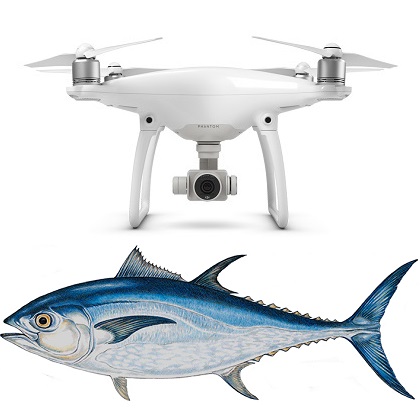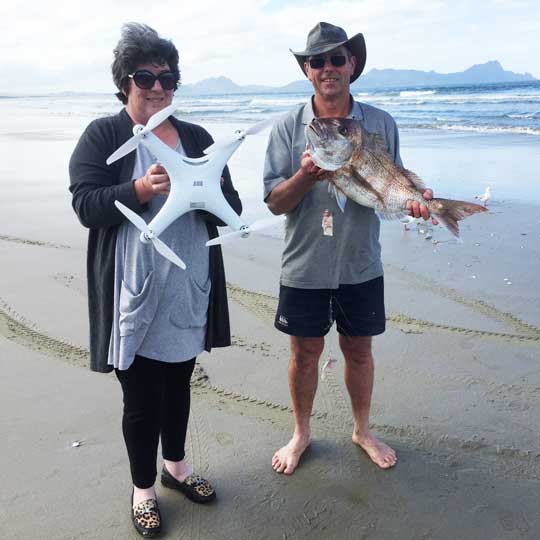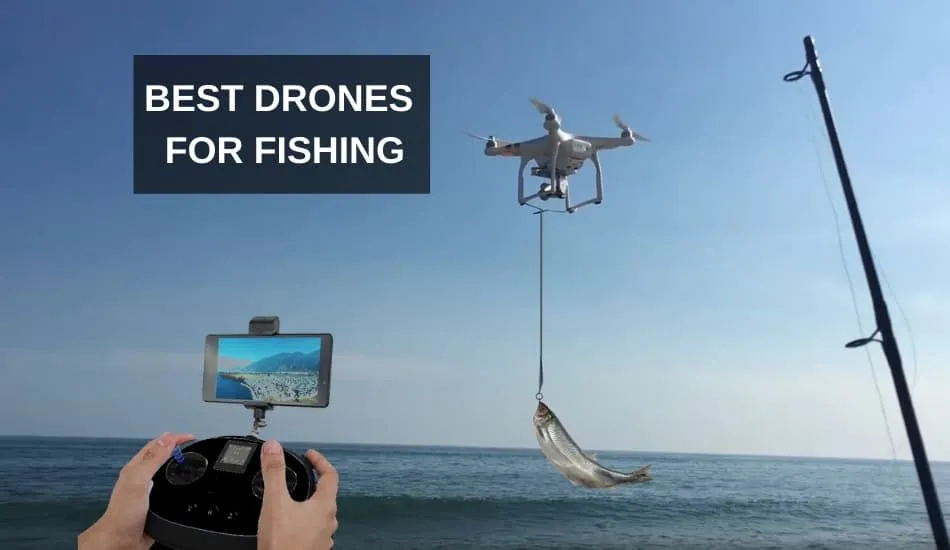
If you are an avid fisherman and live in Australia, you can now use a drone to get an aerial view of the waters around your property. Drones come with various features like a mechanical payload release, an angle adjustable camera, GPS positioning system, and a GPS receiver. There are also fishing lines available that can be used for fishing. They are very stable and secure. The SKY RIGGER drone is one such example.
SKY RIGGER drone fishing line
The SKY RIGGER, a flexible fishing system for drones, allows you fish from the air using minimal effort. Two rotating leg clamps can be mounted to any drone model. The release mechanism uses a bayonet connection and a camlock arm. This allows for quick opening of the line clamps. Unlike other drones, the Sky RIGGER requires no batteries and can accommodate all fishing techniques safely.
For when a fish strikes your fly, the SKY RIGGER features an automatic release mechanism. You can also manually let go of the line by using your rod or hand. This feature can be found on all models. It is highly recommended to buy a Phantom 3 first before purchasing the new SKY RIGGER. Here are some pros and cons to the new line system.
It comes with a mechanical payload.
A drone's mechanical payload mechanism is one of its most important features. Many of them are designed to allow the angler to release the fishing line with ease. Some models, however, do not include a release mechanism. Instead, users must "yank the fishing line" to free the drone. This can be frustrating, especially for people who aren’t comfortable using their fingers to release the line.

Its payload release function is another important feature. When a fish strikes, the payload must be able release the line from the drone. Catch and release fishing is a skill that should be practiced before you attempt it. Many people have experienced good results using the DJI Phantom drone. This technology is not yet at the same level as the fishing drones on the market.
It features a GPS positioning device
Rippton is an Australian-Dutch joint venture that specializes technology-oriented products for fishing. Its mission is to increase angler success rates through the development of products that enhance fishing experience. Rippton's Mobula drone has a GPS positioning system as well as a remote release. The Mobula has the ability to hold bait at surface, provide resistance for kite clips, as well as being environmentally friendly.
It is light at 3 pounds and can take off for 18 minutes. It also has a high-tech GPS system, allowing it to be controlled from 2,000 yards away. It can fly for up to 1000m, which is half a mile. Its point of interest feature lets it take high-quality images of its surroundings. You can enjoy stunning views of fish through its high-resolution lens.
It includes a failsafe safety feature
Aerokontiki's fishing drone includes a failsafe safety feature. It monitors your battery level and releases the line as needed. It will return to dry land if the battery runs out and continue its mission. It operates with industrial-grade flightcontrollers, and it can work anywhere without requiring calibration. You can also use this drone in watery areas.

FAQ
Is it possible to fly my drone in my backyard?
Yes! These are called UAVs, or unmanned aerial vehicles. There are many different types of drones that you can buy today, including small quadcopters as well as large fixed-wing aircraft. The FAA recently published new rules on commercial UAV usage, which allows you to legally fly them for commercial purposes. You should be aware, however, that UAVs flying near airports can cause interference with air traffic control systems. To operate one, you will need to obtain permission from the local authorities.
Is it possible to fly a helicopter while driving?
Flying a drone while driving is dangerous because you could crash into another vehicle or object. Additionally, you may hit pedestrians or animals. A collision with power lines, trees, buildings, or power lines could cause serious damage to your vehicle.
Is Drones Prohibited?
The FAA has banned drones in areas near airports and stadiums. They allow them to fly at nights using GPS technology.
Are drones allowed to be used at public events
Yes, you are free to fly a drone anywhere as long as you follow the rules. You will need to get approval from event organizers if your drone is going to be flying during public events such as a parade, festival or concert.
Statistics
- According to ZipRecruiter, the minimum hourly wage of drone pilots is $20. (thedroneu.com)
- According to Indeed, a drone pilot gets paid $25.73 per hour on average in the US. (dronesgator.com)
- With the top 10% making over $100/h and the bottom 10% making as low as $10/h. (dronesgator.com)
External Links
How To
How to Fly Drones With Beginners
A drone refers to a remote-controlled aircraft designed for aerial photography, surveillance and scientific research. The technology behind drones has been around since World War II. However, commercial use began in 2010 when DJI released their Phantom series of quadcopters. Many types of drones have been made available since then, from beginner-friendly models such as the Parrot AR Drone 2.0, to high-end multi-rotor craft such as the DJI Mavic Pro.
There are several ways to fly a drone, including;
-
Remote control – This is when you attach a device to your hand that allows you to control the drone's flight path. There are two main types: Joysticks (like a radio), and On/Off switches (like an alarm clock).
-
Manual Control – This method lets users remotely control the drone by using a smartphone app. You will need to keep track of where the drone is going and follow the directions from the app.
-
Autonomous Flight – This is when the drone handles all the piloting tasks. It's basically flying autonomously without any human intervention. It must have a builtin camera, sensors capable of taking images and data to enable autonomous flight.
-
Triggered Flying - This method works in the same way as manual control. However, the pilot has to manually set up a route for the drone and it follows that route until reaching the endpoint. After the program is complete, the drone automatically returns to the ground.
-
Landing Gear: Some drones have landing gear that allows them safely to land in case they lose power or run low on battery.
-
Goggles – Pilots often wear goggles while flying to keep themselves safe from any debris.
-
Camera - You can capture photos and videos with your drone from the air.
-
Obstacles: Some drones are equipped with obstacle avoidance systems to prevent them from hitting obstacles.
-
Speed - Some drones can travel at speeds over 40 mph.
-
Battery Life: Most drones have a battery life of between 20 and 30 minutes depending on how many power sources you use.
-
Some drones are capable of traveling up to 30 miles depending upon their make and model.
-
Power source – Some drones require external power sources, others require internal batteries.
-
Weight – Some drones are less than one pound, while other models can be up to four pounds.
-
Size - From small drones that can be carried in the palm of one's hand to larger drones that weigh over 50 pounds, drones come in a variety of sizes.
-
Price - All drones fall within a specific price range, from high-end models that can cost thousands of dollars to lower-cost options starting at $100.